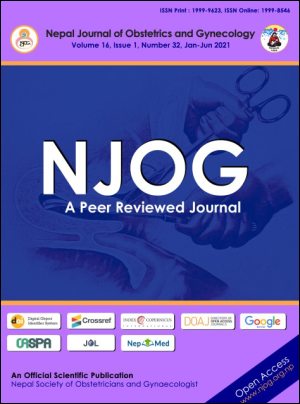Choice of temporary contraception based on client’s demographic status and parity
Keywords:
contraception, demographic status, family planningAbstract
Aim: To analyse the demographic factors and parity in women influencing choice of contraceptive methods.
Methods: This is a hospital record based retrospective study at Bhaktapur hospital, a tertiary hospital in a span of 6 months from October 2020 to March 2021. Data were collected from medical record and descriptive analysis was done.
Results: There were 142 women taking contraceptive service in six months.Implant was the most commonly used method of contraception (48%), followed by the IUCD (26%), Injectable (16%) and OCP (10%). Age group of 20-39 had more acceptance of contraception as compared to adolescent and women above 40. More the parity more usage of long acting reversible contraception was found.
Conclusion: The most common contraceptive method used among women was implant. Client having two or more children are more to receive long acting contraception.
Downloads
Downloads
Published
How to Cite
Issue
Section
License
Copyright (c) 2021 Benju Pandit

This work is licensed under a Creative Commons Attribution-NonCommercial 4.0 International License.
Copyright on any research article in the Nepal Journal of Obstetrics and Gynaecology is retained by the author(s).
The authors grant the Nepal Journal of Obstetrics and Gynaecology a license to publish the article and identify itself as the original publisher.
Articles in the Nepal Journal of Obstetrics and Gynaecology are Open Access articles published under the Creative Commons CC BY-NC License (https://creativecommons.org/licenses/by-nc/4.0/)
This license permits use, distribution and reproduction in any medium, provided the original work is properly cited, and it is not used for commercial purposes.



